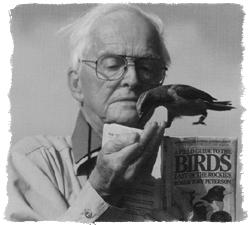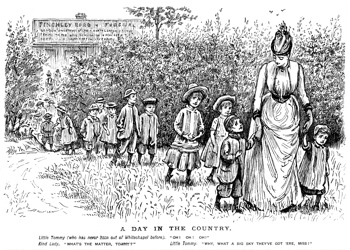|
TRANSFORMATIVE NATURE STUDYMaking Friends with the Rest of NatureTransformative Nature study, or natural history, is the experiential study of organisms and natural objects (especially their origins, characteristics and interrelationships) that helps students Victorian Interest in Natural History

"Queen Victoria reigned from 1837 to 1901. During this period, the study of natural science was enormously appealing to the middle classes. In the nineteenth century, museums, botanical gardens, and other scientific exhibitions educated and entertained the general public and introduced them to the discoveries "At the beginning of the nineteenth century, the majority of scientists consisted of amateur scholars, who observed and recorded everyday phenomena. These hobbyists often compiled vast private collections of specimens, which they or other scientists would then catalog.... "Scholars of the Victorian era have attributed this popularity to the rapid development of science and technology and the move from rural communities to cities. These changes led the public to romanticize nature and see plants and animals as exotic. Newspapers ran natural history sections, and every correspondence column became a debate over issues such as whether swallows could hibernate or whether toads could live for centuries immured in blocks of stone." — NCSU Libraries Special Collections
Charles Darwin and Beatrix Potter are amongst the better known natural history chroniclers of their day. (Though known mainly as a children's writer, Potter was no less a keen observer of the plants and animals around her. Indeed, she knew fungi very well and in 1897, her uncle presented her very important study of the germination of spores to the Linnaean Society.)
A DAY IN THE COUNTRY Nature study used to be an accepted and important part of a young person's education (especially for boys). What happened? Where did it go? As someone who was educated in the 1960s and 70s, I remember with fondness our classes spent outdoors, collecting leaves or watching for birds. I can still identify the five trees whose leaves I had to press in autumn, and the five birds we had to colour that spring, back in grade 3 (age 9). To me, that was transformative Nature study! It might not sound like much but it doesn't have to be much to be transformative for a child. Compare what I learned then to today's students who can identify dozens and dozens (if not hundreds) of commercial logos by the time they graduate, but few or none of their avian, arboreal or terrestrial neighbours. If we are to help our students learn to love and care for the Earth and the natural environment around them, we must introduce them to their non-human neighbours and help them make friends with these "animals, plants, and minerals" — through transformative Nature study. 
— Roger Tory Peterson Strategies for Transformative Nature StudyTeachers can help their students
The honourable title of Natural History has, and unwisely, been restricted too much of late years to the mere study of plants and animals. I desire to restore the words to their original and proper meaning — the History of Nature; that is, of all that is born, and grows in time; in short, of all natural objects. If anyone shall say — By that definition you make not only geology and chemistry branches of natural history, but meteorology and astronomy likewise — I cannot deny it. They deal, each of them, with realms of Nature. Geology is, literally, the natural history of soils and lands; chemistry the natural history of compounds, organic and inorganic; meteorology the natural history of climates; astronomy the natural history of planetary and solar bodies. And more, you cannot now study deeply any branch of what is popularly called Natural History — that is, plants and animals — without finding it necessary to learn something, and more and more as you go deeper, of those very sciences. As the marvellous interdependence of all natural objects and forces unfolds itself more and more, so the once separate sciences ... are forced to interpenetrate, as it were; and to supplement themselves by knowledge borrowed from each other. Thus — to give a single instance — no man can now be a first-rate botanist unless he be also no mean meteorologist, no mean geologist, and — as Mr. Darwin has shown in his extraordinary discoveries about the fertilisation of plants by insects — no mean entomologist likewise. — Charles Kingsley, circa 1874
|


